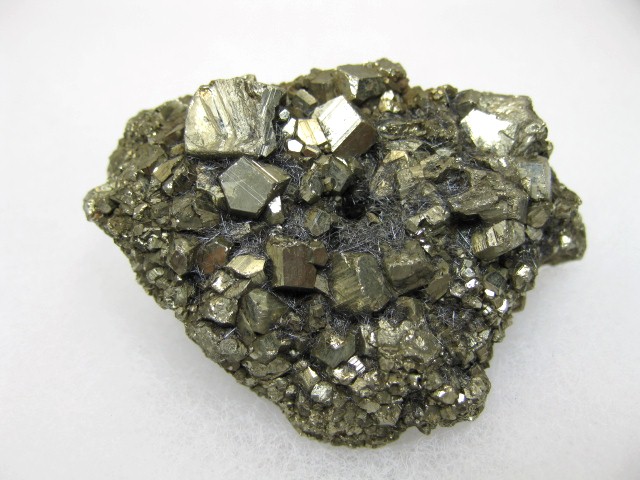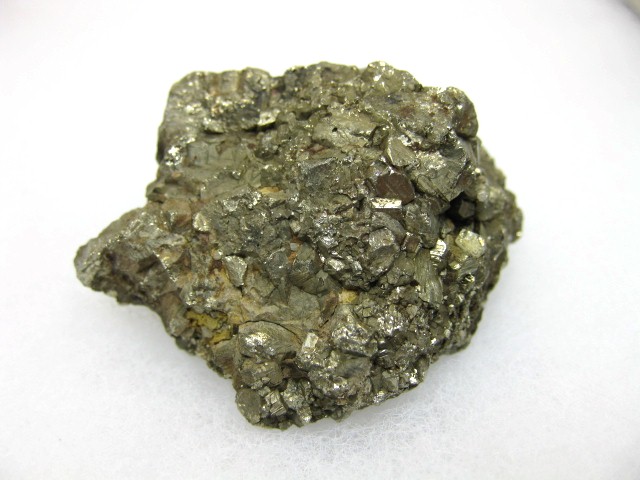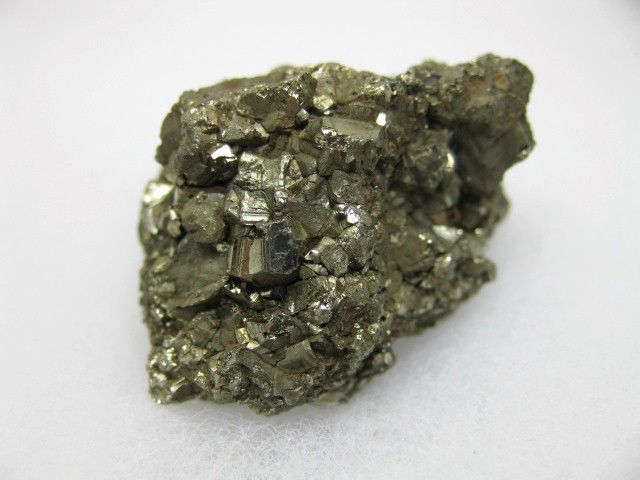Description
- Pyrite
- Noche Buena Mine
- Noche Buena, Mun. de Mazapil
- Zacatecas, Mexico
- Specimen measures approx. 2″ wide
Pyrite is sometimes called Fools Gold because of its similarity in color and shape to Gold. In the old mining days, Pyrite was sometimes mistaken for Gold, as they frequently occur together, although Gold and Pyrite can very easily be distinguished by simple observation and testing of characteristics.
Pyrite occurs in numerous shapes and habits. The smaller crystal aggregates may give off a beautiful glistening effect in light, and the larger crystals may be perfectly formed, including fascinating cubes, penetration twins, and other interesting crystal forms.
A mineral is a naturally occurring chemical compound. Most often, they are crystalline and abiogenic in origin. A mineral is different from a rock, which can be an aggregate of minerals or non-minerals and does not have one specific chemical composition, as a mineral does. The exact definition of a mineral is under debate, especially with respect to the requirement that a valid species be abiogenic, and to a lesser extent with regard to it having an ordered atomic structure.
The study of minerals is called mineralogy. There are over 5,300 known mineral species; over 5,070 of these have been approved by the International Mineralogical Association (IMA). The silicate minerals compose over 90% of the Earth’s crust. The diversity and abundance of mineral species is controlled by the Earth’s chemistry. Silicon and oxygen constitute approximately 75% of the Earth’s crust, which translates directly into the predominance of silicate minerals.
Minerals are distinguished by various chemical and physical properties. Differences in chemical composition and crystal structure distinguish the various species, which were determined by the mineral’s geological environment when formed. Changes in the temperature, pressure, or bulk composition of a rock mass cause changes in its minerals.
Minerals can be described by their various physical properties, which are related to their chemical structure and composition. Common distinguishing characteristics include crystal structure and habit, hardness, lustre, diaphaneity, colour, streak, tenacity, cleavage, fracture, parting, and specific gravity. More specific tests for describing minerals include magnetism, taste or smell, radioactivity and reaction to acid.
Minerals are classified by key chemical constituents; the two dominant systems are the Dana classification and the Strunz classification. The silicate class of minerals is subdivided into six subclasses by the degree of polymerization in the chemical structure. All silicate minerals have a base unit of a [SiO4]4− silica tetrahedron—that is, a silicon cation coordinated by four oxygen anions, which gives the shape of a tetrahedron. These tetrahedra can be polymerized to give the subclasses: orthosilicates (no polymerization, thus single tetrahedra), disilicates (two tetrahedra bonded together), cyclosilicates (rings of tetrahedra), inosilicates (chains of tetrahedra), phyllosilicates (sheets of tetrahedra), and tectosilicates (three-dimensional network of tetrahedra). Other important mineral groups include the native elements, sulfides, oxides, halides, carbonates, sulfates, and phosphates.







